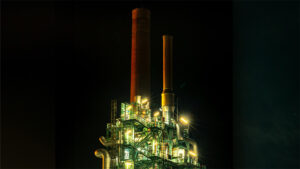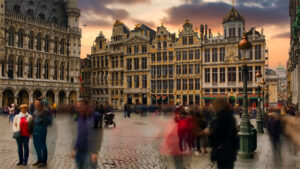A terror attack in the United Kingdom May 23 killed at least 22, and injured dozens more. As the attack targeted a youth pop concert, a high proportion of the deaths were among children and teenagers. United Kingdom Prime Minister Theresa May immediately cancelled all her ruling Tory Party’s campaign events — national elections are June 8 — so her government could focus on the crisis. The country’s other parties quickly followed suit.
As of yesterday, the Tories had this election locked up to the degree that a generational shift in UK politics was in the offing. If the polls are accurate, the Tories would have eaten deeply into the holdings of other parties not just in England, but in Wales and Scotland as well. Ongoing Brexit talks have justified and energized the Brits separate-and-superior mindset, and Theresa May has been using that energy to reshape the UK political space. That means, among other things, the British Labour party moving into the political wilderness, the de facto absorption of the anti-EU UK Independence party into the Tories, the Liberal Democrats’ return to the fringes of British power, and the evisceration of the Scottish National Party’s stronghold on Scottish politics and an end (for now) of talk of Scottish independence.
That was before the attack.
Between the rally-round-the-flag effect of terror attacks and the fact that the ruling Tories are the law-and-order party, the UK is now on the cusp of a complete overhaul. Barring some truly unprecedented revelations that bring down May and the entirety of the Conservative leadership, the Tories will walk away from the June elections with the strongest showing of perhaps the last century. In the election’s wake, Labour will not simply be weak, it will be gone and it is unlikely to come back in a meaningful way.
What’s going on in the United Kingdom is hardly unique; Center-left parties are collapsing across the developed world. It is a symptom of a wider change in the way we all live.
Contemporary political systems are an outgrowth of the economic structures established by the industrial revolutions of the 18th and 19th centuries.
Before those economic revolutions the world was a constellation of fairly small places. Low-output per hour of work in agriculture forced most of the population to be farmers. Life before semis and railroads and globalized supply chains meant that foodstuffs needed to be lugged around by horse and backpack. Cities — places where you could not grow your own food — were small as well as, well, revolting. Cram a bunch of people in a small space with no running water or plumbing, make them dependent upon food that has to be carried in from somewhere else, and things get gross and violent pretty quickly. In such a world, there weren’t a lot of mass-mobilization politics. Either you were a landowner or other flavor of aristocrat who ruled, or you were a pleb who didn’t get a vote.
The First Industrial Revolution of roughly 1760 to 1820 upended that system. The introduction of mechanized energy such as steam engines enabled us to shift from producing goods by hands to producing them with machines. Such mass outputs increased worker efficiency while concentrating the geography of production. The result was mass urbanization and mass worker concentration. Within a few decades these economic evolutions shifted the balances of power. The “Left” catered to those who provided the labor in the new order, while the “Right” represented those who controlled the land and capital. There are many different ways to categories the Left and the Right, but the transition to industrialization is where the political cleavages in the modern world started, and have remained the most powerful delineating factor in Western politics ever since.
Plenty of folks vested in the pre-industrial order fought tooth and nail against the emerging political landscape, but they faced two insurmountable challenges. First, the winds of history were blowing and you cannot un-invent technology without removing the bedrock of the civilization that supports it (i.e. devolution into anarchy). As the new Lefters and Righters gained power, these older groups fought back. Political instability and even revolutions were the rules of the day. And even when the old-order folks won, its isn’t like their areas suddenly de-industrialized. New challenges arose the very next day until all the old world was swept away.
Second, there was a new country on the scene that had the gall to let the people decide who would be in charge. Those pesky Americans devised a political system — democracy — that was (quite accidentally) able to reshape itself, contain and ultimately harness the new economic-political lines of identification. Democracy quickly became a way to accelerate the shift from the old world of aristocrats, plutocrats and royals to a newer system with a deep economic rationale that enjoyed broader support.
The Second Industrial Revolution of 1860 to 1945 was the equivalent of rocket fuel in a station wagon. Machine tools gave way to assembly lines. Coal gave way to diesel and gasoline. Railways, telegraphs and ocean-going fuel-burning cargo ships took over global commerce. Many of the new developments — in transport, medicine and sanitation — were expressly designed to counter some of the more disgusting aspects of early industrialization. Antibiotics, sewers, electricity and new distribution techs didn’t just make cities bigger, but also removed some of the features that made them death traps when compared to the countryside — accelerating urbanization. The countryside, where Left-Right classifications weren’t entirely appropriate, became systematically less important as populations en masse shifted into the urban worker-capital categories.
This broad system of political alignment then held until about ten years ago.
The financial crisis of 2008 was a watershed because it seized up traditional capital markets. That disruption damaged everything that the economic structures of the industrial revolution sustained: life-long careers (and even jobs), labor unions, traditional manufacturing, employment patterns…and the Left-Right split that represented all those things in the political arena. The 2008 crisis occurred just as computerization was really hitting its stride, and the link between capital and capital-owners has blurred. Unequally distributed wealth isn’t the point — it is that capital is no longer linked at the hip to organized industry. Capital is now free-flowing. It goes to any place in any industry in any volume based on what looks promising.
That is exciting, but it is also disruptive. Less Walmart, more Amazon. Fewer assembly lines, more 3D printing machine shops. Fewer accountants, more TurboTax. Fewer unions, more Uber. Fewer financial firms and more AI-driven stock trading. Fewer supermajors and more tiny firms using infotech to wrestle oil out of shale formations. Fewer landlines and all the labor and mammoth companies that go along with them, more iPhones that just require the odd cell tower. We are now in a Digital Revolution that is redefining the relationship between labor and capital. Sure, it means that you can do more with less and have fancy gadgets, but it also means that anyone who had a stake in the old system — whether a line worker or a bank teller or a secretary or a stock broker or a roughneck — has to abandon not just their job, but their career. And that has political consequences.
The new technologies are far less labor intensive — meaning fewer workers. The new technologies have far lower barriers to entry, so there is no monolithic employer — meaning no unions to support, and no employer to bargain with or fight against. The traditional “Left” just doesn’t fit in the world rapidly unfolding, and so it is collapsing. Everywhere.
- In the United States the populist uprising that elected Donald Trump is a textbook case of how economic evolution shapes political choice. Line workers — even union workers — deserted the Democrats en masse for Trump. What’s left of the Democrats — and they’ve lost over 1000 elected positions at state and national level since 2008 — is now incapable of taking any stance save a general opposition to all things Trump. That’s not enough to hold, and they face a generational wipeout in the 2018 by-elections that is likely to hand the Republicans their strongest Congressional majority in decades.
- French presidential elections in May eradicated the ruling Socialists. Their candidate didn’t only not make it to the second voting round, he only garnered an 6% share of the first-round vote. Parliamentary elections in June may well reduce them from the dominant party in the National Assembly to the fourth-largest.
- The European financial crisis has gutted the political stability of Europe’s peripheral countries. Greece is ruled by the nationalist-communists. Italy will likely have a comedian as prime minister by year’s-end. The Spanish Left is being displaced by a party that takes its developmental cues from Greece.
- In Israel the economic shift has been so holistic that it has nearly banished the Israeli Labor party — the party that founded Israel — from the Knesset.
The only significant country where the Left is holding any ground is Germany, a country artificially re-constructed after World War II to have a very specific — and durable — political system. And even there the Social Democrats are on course to lose their fourth consecutive election this fall. (Yes, the center-left actually rules Canada — the only place of note that it still does. but Canada both lives in strategic nirvana and is disastrously complicated from a domestic political organizational point of view so I’d not draw too many lessons from the Great White North.)
What’s left of the economic Left is being subsumed by populism, a movement that broadly speaking is unhappy with the current state of affairs, thinks that everyone is out to get them, wants change, wants it now, and wants to use a mass government overhaul in order to force the issue (in the 1930s we would have called this national-socialism). Populism has managed to capture much of the Left’s thunder in a wide variety of countries including — but hardly limited to — Hungary, Poland, Austria, Finland, Israel, France, Italy, the Netherlands and Turkey. Yes, Trump is a symptom of the Populist rise. But so too are Bernie Sanders and Elizabeth Warren. (There are many types of populists. None have ever ended up delivering what they promise.)
It is tempting to say that politics is cyclical and the Left will recover, or that it botched the chance to rule in the past two decades and it just needs a little time in the wilderness to reconnect to its roots, or that the Left can embrace other issues like identity politics and social issues to reinvigorate itself. But that misses the point. The economic Left has lost power everywhere. The grab bag that remains is important and will obviously color political and social evolutions, but it cannot define the era. Such awkward coalitions can garner votes, but not in the quantities sufficient to govern. The term “Left” itself may be appropriated by new and varied causes — the most likely is to support the coalition of those devastated by Apple, Amazon, Uber and the rest — but those are not workers, but instead the opposite. The rubric that has defined the Left for nearly two centuries is gone.
And before those of you on the Right get too excited, just because the Left disappears doesn’t mean the Right wins. The Left is not alone in dissolving into the Digital Revolution. The Right as we understand the term is finished too. Trump won by running against the Republicans. May is in charge in the UK because the traditional Right collapsed in the Brexit vote. France’s Right is in just as much trouble as the French Socialists. The Right parties of Poland, Israel, Austria and Japan are now more nationalist and/or populist than that the classical Right in the labor-capital divide.
It is about to get a whole lot worse. As the global demographic flips into mass retirement around 2022, the availability of capital that has made the Digital Revolution so broad and deep will drastically shrink. Currently, changes in capital allocation are breaking down our “normal” Left-Right political systems, but the Digital Revolution’s advances at least maintaining an economic structure. Remove all the capital that makes the Digital Revolution possible and we’re in for a world of hurt…with populism the only political movement that has traction.
The last time our economic-political systems faced this much evolution and upheaval, the disruption lasted over a century and culminated in the world wars. The issue is that you can’t have normal political parties unless you have a grand vision, and you can’t form a grand vision unless you understand the rules of the game. As the developed world moves into a post-industrial economic system — and one in which the global population structure shifts from young, working tax-payers to retirees — we don’t know what those rules are. And until we do, we cannot begin process of exploring how to rule ourselves.






